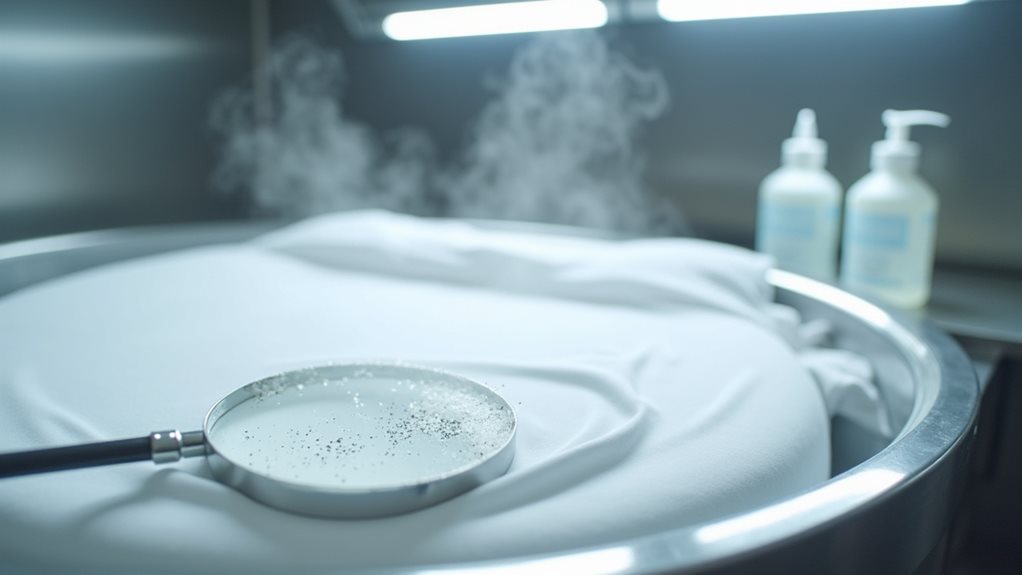Dry cleaning can kill adult bed bugs through high heat (140-160°F) and chemical solvents, but it’s like putting a band-aid on a broken dam—you’ll eliminate what’s on your clothes while the real party continues in your mattress, baseboards, and furniture. The process struggles with bed bug eggs hiding in fabric creases, and many cleaners won’t even accept infested items due to contamination risks. Understanding why this partial solution falls short will help you tackle the bigger picture.
Understanding Bed Bugs and Their Vulnerabilities
When you’re dealing with bed bugs, understanding what makes these tiny vampires tick becomes your first line of defense, and trust me, I’ve learned this lesson the hard way after discovering my favorite vintage jacket had become a five-star hotel for these unwelcome guests.
These resilient little pests have specific vulnerabilities you can exploit, particularly their sensitivity to extreme temperatures above 113°F, though bed bug eggs require even higher heat at 120°F to eliminate completely.
What makes infestations so stubborn is their resistance to common pesticides, which means relying solely on cleaning solvents won’t cut it.
However, dry cleaning solvents combined with high heat present an effective method for eliminating these persistent bugs from your fabrics.
Most professional dry cleaning processes use temperatures between 140-160°F, which can effectively kill bed bugs when items are exposed to these heat treatment temperatures for sufficient time.
How the Dry Cleaning Process Works
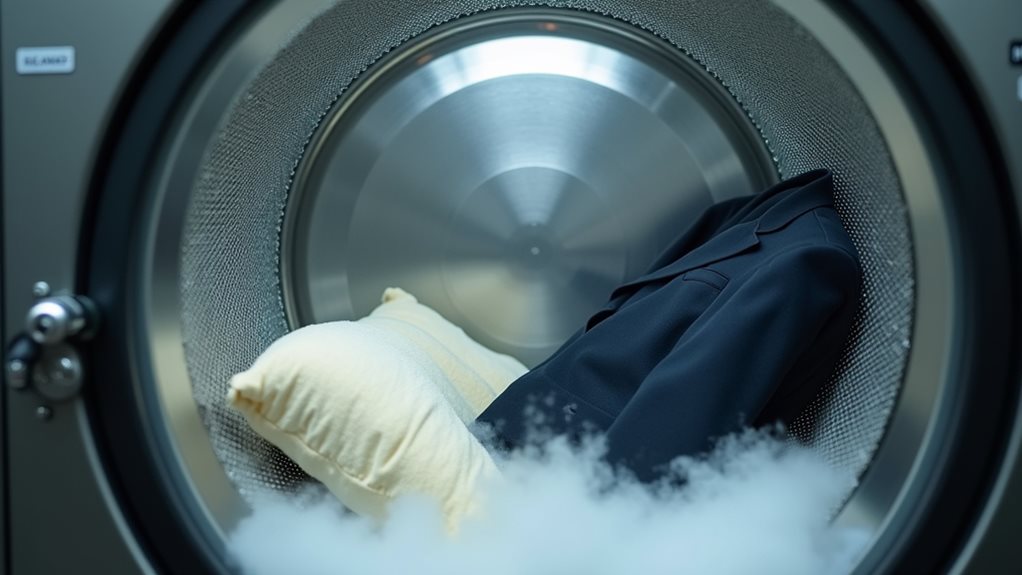
You’ve probably wondered how those magical machines at your local dry cleaner actually work their magic on your favorite blazer, and honestly, I used to think it was just some fancy washing machine until I learned about the fascinating chemistry involved.
The process relies on powerful chemical solvents like perchloroethylene (PERC) instead of water, which means your delicate fabrics get a thorough cleaning without the shrinking drama we’ve all experienced with that one sweater 😅.
What makes this particularly interesting for bed bug situations is how the combination of these harsh chemicals, raised temperatures, and the thorough agitation process creates an environment that’s pretty hostile to those unwanted hitchhikers.
The high heat exposure generated in commercial dry cleaning machines typically reaches temperatures that are lethal to bed bugs and their eggs, making it an effective method for treating infested clothing and fabrics.
Chemical Solvent Usage
Understanding how dry cleaning actually works might surprise you, since most of us just drop off our clothes and trust the magic happens behind those swinging doors.
The dry cleaning process relies on chemical solvents, primarily perchloroethylene (often called PERC), instead of water to clean your garments. This solvent proves remarkably effective against adult bed bugs, fundamentally suffocating them while preserving your fabric integrity – something I learned after my own unfortunate encounter with these unwelcome guests 😅.
However, here’s the catch: while PERC eliminates adult bed bugs during treatment, it won’t protect your clothes once they return to an infested environment.
Plus, frequent dry cleaning can gradually weaken fabric fibers, making this a temporary solution rather than your crucial bed bug battle plan. The high heat used in professional dry cleaning, typically reaching 140°F or higher, is lethal to bed bugs in all life stages including eggs, nymphs, and adults.
Temperature and Heat
Two vital factors determine whether dry cleaning actually destroys bed bugs: the temperature your clothes reach during processing, and how long they stay at those lethal heat levels.
While dry cleaning uses chemical solvents that can kill adult bed bugs, the temperature component isn’t always reliable for thorough eradication. Most dry cleaning processes don’t consistently reach the essential 113°F threshold needed to eliminate bed bug eggs, which honestly feels like nature’s cruel joke 😅.
Those resilient little eggs hide deep in fabric seams where high temperatures struggle to penetrate effectively. You’ll find that while your clean clothes emerge looking fresh, hidden infestations might survive if the heat wasn’t sufficient.
That’s why experienced pest control experts recommend combining dry cleaning with other methods rather than relying solely on chemical solvents for complete bed bug elimination. Commercial dry cleaning machines typically generate enough heat to destroy bed bugs in clothing and bedding items that cannot be safely washed in hot water.
Fabric Treatment Process
Beyond the temperature concerns, the actual fabric treatment process reveals why dry cleaning’s effectiveness against bed bugs remains inconsistent, and honestly, watching this process unfold helped me understand the limitations firsthand.
You’ll see your garments placed in machines where chemical solvents like PERC circulate around fabrics, removing stains without water damage—perfect for delicate fabrics that can’t handle traditional washing.
However, here’s where reality hits: while these high temperatures and cleaning process can eliminate some adult bed bugs, they don’t penetrate deeply into seams where infestations often hide.
The chemical solvents aren’t specifically designed for pest control, making dry cleaning somewhat effective but not foolproof against bed bugs 😅.
While dry cleaning works well for delicate fabrics like silk, wool, and cashmere, the process is primarily designed for garment care rather than comprehensive pest elimination.
Effectiveness of Dry Cleaning Against Bed Bugs and Their Eggs
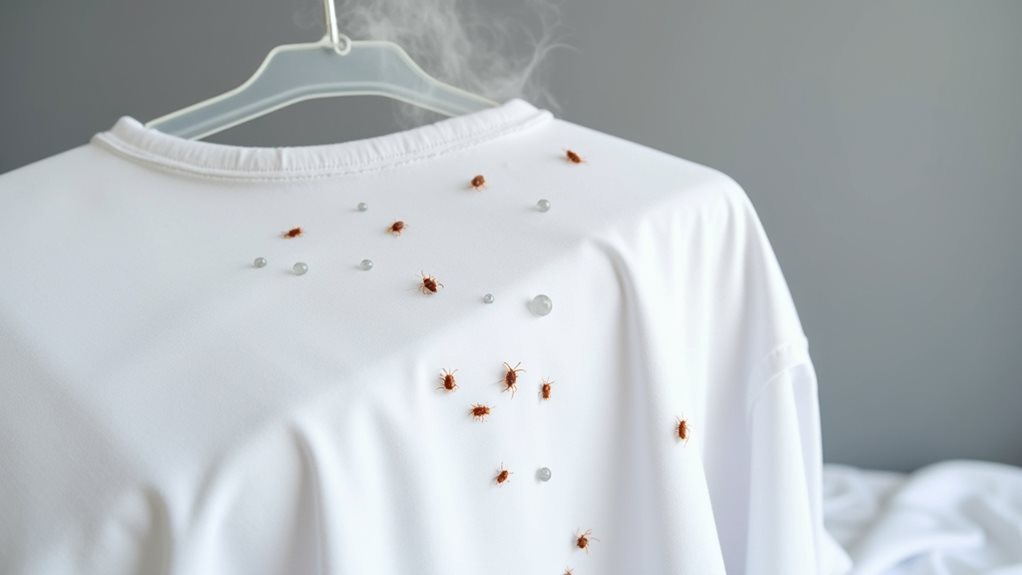
The harsh reality of discovering bed bugs in your favorite clothes hits differently when you’re standing at the dry cleaner’s counter, desperately hoping that those chemical solvents will somehow solve your nightmare.
Here’s the truth: dry cleaning‘s effectiveness against bed bugs isn’t the miracle cure you’re hoping for. While those powerful chemicals can eliminate adult bed bugs on contact, they’re surprisingly lousy at penetrating fabric crevices where eggs hide, and the cleaning process rarely reaches the high temperatures needed to destroy these resilient little survivors.
You’ll quickly discover that treating isolated clothing items won’t stop an infestation that’s likely spreading throughout your home, which means you’ll need professional pest control to tackle growing bed bug populations effectively.
Limitations and Risks of Using Dry Cleaning for Bed Bug Control
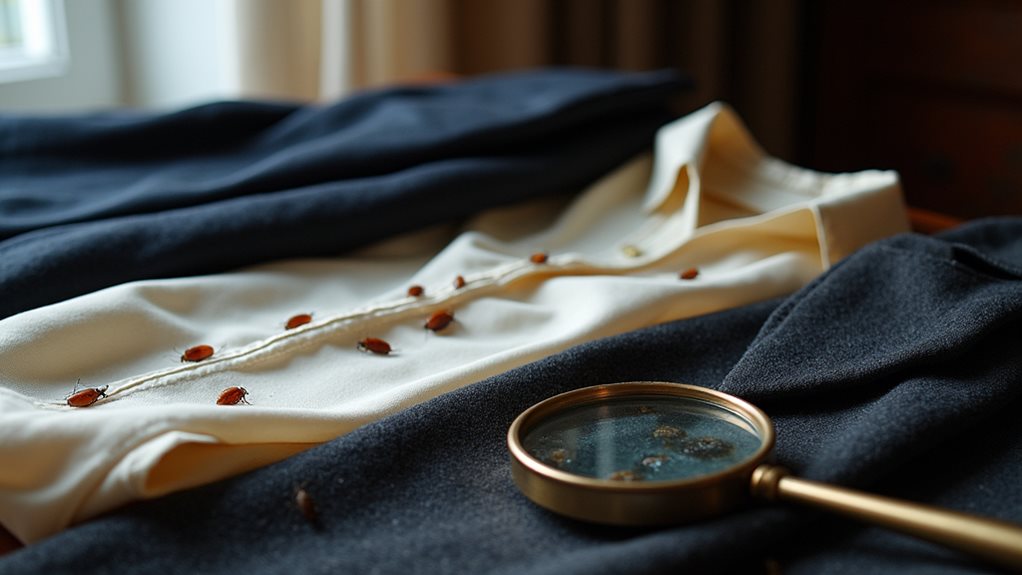
Although dry cleaning might seem like your knight in shining armor against bed bugs, I learned the hard way that it comes with some pretty considerable limitations that can leave you frustrated and still dealing with an infestation.
The effectiveness of dry cleaning against bed bugs isn’t what you’d hope for, honestly. While chemical solvents can kill adult bugs, they often miss eggs hiding in fabric creases, which means your “clean” clothes can still harbor future problems.
Most dry cleaners won’t even accept infested clothing because they’re worried about contaminating their facility and other customers’ items.
The cleaning process doesn’t provide lasting prevention either, so you’ll likely face reinfestations if you don’t eradicate bugs from your entire home environment first.
Alternative Methods for Eliminating Bed Bugs
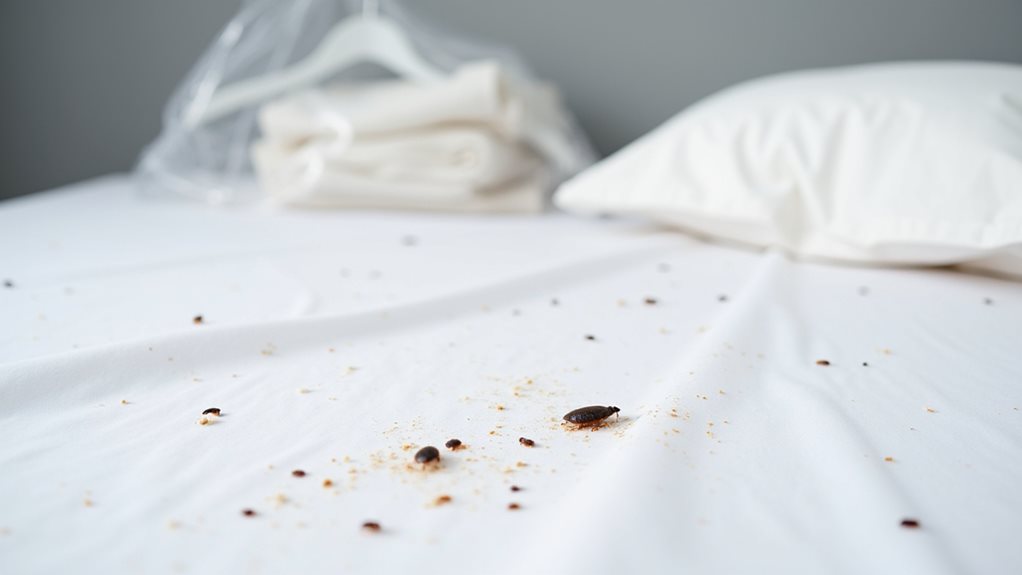
Since dry cleaning disappointed me so thoroughly, I’ve spent countless nights researching and testing other methods that actually work against these persistent little vampires 🦟.
After dry cleaning failed me completely, I became obsessed with finding real solutions that actually defeat these bloodthirsty pests.
While dry cleaning’s cleaning solvents and textile cleaning process can’t guarantee results against bed bug infestations, I’ve discovered several prevention methods that actually eliminate bed bugs effectively.
Here’s what worked for me when dealing with infested laundry:
- Heat treatment – Washing at 120°F for 30 minutes kills everything, unlike cleaning chemicals that often fail
- Professional pest control company – They’re effective in killing bed bugs using targeted approaches beyond standard cleaning solvents
- Diatomaceous earth – This non-toxic powder dehydrates bugs on contact, complementing other prevention methods
These alternatives consistently outperform dry cleaning for bed bug control.
Preventive Measures to Avoid Bed Bug Infestations
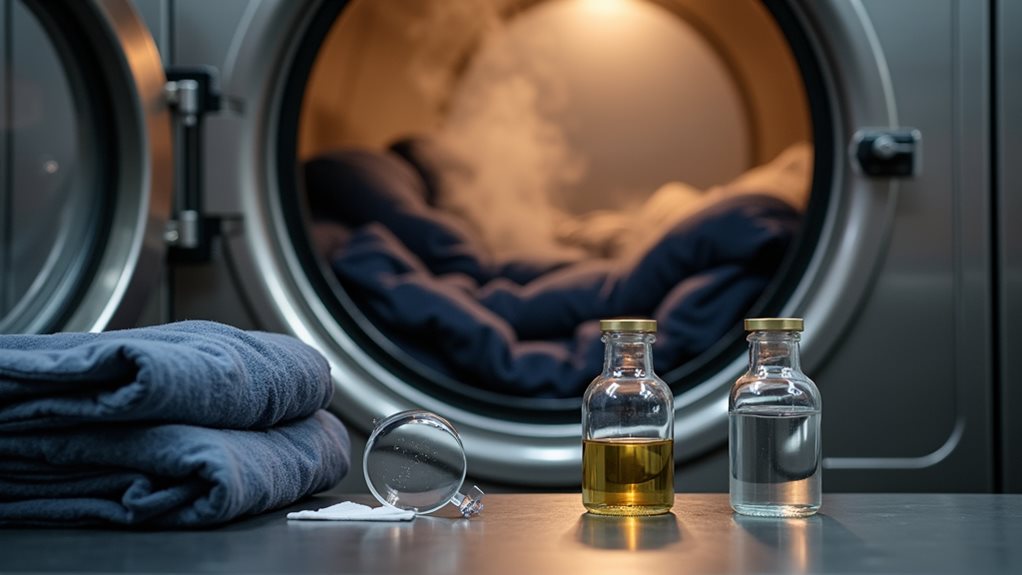
After my expensive dry cleaning experiments taught me that prevention beats cure every single time, I’ve become obsessed with creating an invisible fortress around my home that bed bugs simply can’t penetrate 🛡️.
You’ll want to heat-dry clothing and bedding at scorching temperatures, because nothing says “bed bug control” quite like 120°F+ laundry sessions that’d make you sweat.
Install protective encasements on your mattresses – think of them as superhero suits for your sleep sanctuary.
When you’re out hunting treasures at thrift stores or staying in questionable hotels, inspect items like you’re a detective solving crimes, because thorough inspections prevent bed bugs from hitchhiking home with you.
Finally, frequently vacuum those sneaky cracks and crevices to reduce the risk of any bed bug infestation taking root.
When to Seek Professional Pest Control Services

When should you wave the white flag and call in the cavalry? If you’re spotting bite marks on your skin, discovering bloodstains on your sheets, or actually seeing these unwelcome guests crawling around, it’s time to acknowledge that dry cleaning alone won’t solve your bed bug infestation.
Professional pest control services bring specialized methods like heat treatment that DIY methods simply can’t match.
Here’s when you absolutely need the pros:
- When bed bugs have spread beyond just your clothing to multiple rooms
- After DIY methods and dry cleaning have failed to stop the problem
- When you’re dealing with a severe infestation that’s overwhelming your efforts
Professional exterminators provide a customized treatment plan for effective eradication, helping you reclaim your pest-free environment faster than struggling alone.

